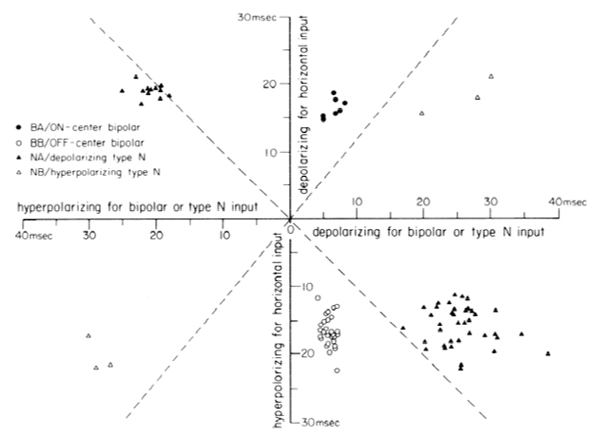This is the second paper in the category, 100 Papers You Should Read (in vision science).
This manuscript, Functional Organization of Catfish Retina by Ken-Ichi Naka is a landmark paper in the vision science communities attempts to classify neurons in the retina and figure out how they process information.
Ken-ichi Naka made fundamental contributions to our understanding of vision science, particularly by examining how light alterations are encoded by retinal neurons. Naka was interested in discovering how spatiotemporal signal processing occurred in retina which he investigated through classical morphology and electrophysiology approaches where he described light processing as fundamentally linear but with notable non-linear exceptions in the inner retina where contacts between bipolar, amacrine and ganglion cells occurred.
Ken-ichi Naka was invited in 1962 to visit Cambridge University to work with William Rushton, specifically to address the S-potentials which were thought at the time to come from horizontal cells. Naka and Rushton selected teleost retinas specifically because of the large horizontal cells making morphology and electrophysiology easier. This collaboration defined the spatial properties of the S-potential and confirmed the horizontal cell as the origin.
By 1971, Ken-ichi Naka had moved to Caltech and was working on receptive fields, again in teleosts but this time in catfish due to their easy availability, hardiness and large retinal neurons. Over the next decade, Naka would continue work with the catfish retina to define and establish signal processing in the retina and create mathematical models of information processing. His work in horizontal cell receptive fields as well as horizontal to ganglion cell circuits here and here, helped define how white noise inputs were processed in the retina and began a new era in the investigation of light processing in the retina. Fundamentally, his observation that light stimulus could be represented by white noise, a set of values around an average or mean value informed much of his work for three decades.
This paper, Functional Organization of Catfish Retina brings together that early work and defines bipolar cell receptive fields, segregates bipolar cell-ganglion cell pairings into ON-center and OFF-center pairs, classifies horizontal and a “type N” lateral transmission system (amacrine cells) as well as another type C neuron. Finally, a type Y ganglion cell is defined.
